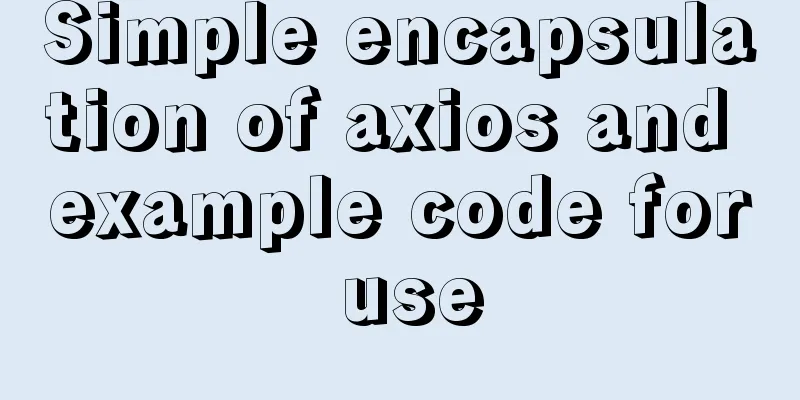A brief analysis of the issues that should be paid attention to when making 404 error pages

|
When optimizing a website, we must learn to use error pages. For example, a 404 error page may appear on our website. Here are some issues that should be noted when making a 404 error page: |
<<: Detailed explanation of using the at command for one-time scheduled tasks in Linux
>>: HTML basic summary recommendation (text format)
Recommend
Examples of some usage tips for META tags in HTML
HTML meta tag HTML meta tags can be used to provi...
Detailed tutorial on deploying apollo with docker
1. Introduction I won’t go into details about apo...
Vue implements verification code countdown button
This article example shares the specific code of ...
A brief introduction to MySQL storage engine
1. MySql Architecture Before introducing the stor...
The leftmost matching principle of MySQL database index
Table of contents 1. Joint index description 2. C...
CentOS 7.6 installation of MySQL 5.7 GA version tutorial diagram
Table of contents Environment Preparation Environ...
WeChat applet implements sorting function based on date and time
I recently took over a small program project, and...
Detailed tutorial on installing mysql 8.0.13 (rpm) on Centos7
yum or rpm? The yum installation method is very c...
Example of how to create a local user in mysql and grant database permissions
Preface When you install MySQL, you usually creat...
Javascript to achieve the effect of closing advertisements
Here is a case study on how to close ads using Ja...
How to Set Shortcut Icons in Linux
Preface Creating shortcuts in Linux can open appl...
Using vue3+threejs to imitate the iView official website big wave special effects example
Table of contents Preface 1. Rendering 2. Code 3....
What are the ways to import CSS? What is the difference between link and @import? How to choose
I saw that Taobao’s webpage uses import, while man...
Summarize some general principles of web design and production
<br />Related articles: 9 practical suggesti...
Tips for data statistics in MySQL
As a commonly used database, MySQL requires a lot...









